Your garden beds will look much happier and more alive if you add some vibrantly coloured flowers. You can go for a formal colour scheme or a more relaxed cottage garden style, with flowers in every colour of the rainbow. Here are colourful flowers whose names begin with the letter V to get you started.
Flowers That Start With V – List Of Flowers That Name Starts With the Letter ‘V’
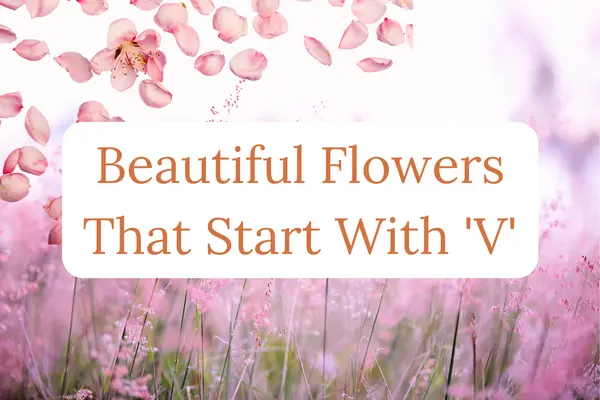
Venus looking glass
This plant produces violet blue, bell- or wheel-shaped blooms. They are radially symmetrical and have corollas with five lobes. The leaves are 1/4–1 “Shell-shaped, wide, and scalloped on the edges The plant expands to a size of 6–18 “high and blooms between May and August. It creates a fruit capsule with a small number of seeds.

Triodanis perfoliata also referred to as the clasping bellflower or the clasping Venus’ looking-glass, is a flowering plant in the Campanulaceae family. It is an annual herb with a natural distribution that stretches from Canada to Argentina in North and South America. Australia, China, and Korea have also legalised it.
Verbena
Try growing verbena flowers if you want flowers that will endure the sweltering summer days (Verbena officinalis). When planted in the sunniest part of your garden, verbena, whether annual or perennial, will provide you with summer blossoms. It is best to choose perennial verbena for a more impressive show if summers in your area are frequently humid.
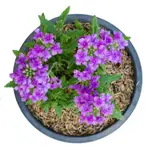
The hardy verbena flower can thrive in a variety of soil and solar conditions. Locate this hardy plant where it receives eight to ten hours of sun each day when you’re ready to discover how to cultivate verbena. The only requirement for the soil for the verbena flower is that it be well-draining. For the growth of verbena, poor soil is okay.
The verbena flower can withstand drought, but frequent weekly watering of around an inch (2.5 cm) can encourage blossoming. To prevent the foliage from getting wet, water verbena plants at the base of the plant. However, weekly watering might not be required if rainfall in your area has reached an inch (2.5 cm) or more.
Vinca
Catharanthus roseus, sometimes known as annual vinca, is a stunning tropical perennial that is typically planted as an annual. Annual vinca is the ideal plant for sunny regions because it has beautiful blooms and foliage that resemble impatiens rather than loving shade.
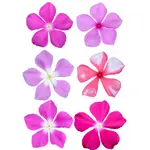
These annual flowers, often referred to as Madagascar periwinkle, aren’t the newest or flashiest on the gardening market, but recent cultivar improvements call for a closer look at this common bedding plant. Horticulturists have been working hard to develop new hues in easy-to-start from-seed plants with stunning flowers, and they have surely succeeded! The beautiful variety of hues that annual vinca currently comes in will wow you.
Vincas are quick-growing plants that can be found in a range of hues and dimensions. They are renowned for their solitary, five-petal blooms, which frequently touch or overlap one another. Vincas are a wonderful addition to any garden, and butterflies find them to be particularly alluring. In addition, they can withstand rabbit damage. The enlarged colour palette for vincas is now accessible, so if you haven’t used them in your garden in a while, you should. You will undoubtedly discover the ideal vinca for your yard.
Valerian
Both Europe and Asia are the natural habitats of the perennial flowering plant known as Valeriana (Valeriana officinalis, Caprifoliaceae). The plant can reach a height of 1.5 metres (5 feet) when it is fully matured in the summer.

It also produces lovely pink or white blooms with a delicious perfume that draw a wide variety of flies, especially hoverflies of the genus Eristalis. Some Lepidoptera (butterfly and moth) species, including the grey pug, have larvae that eat the plant.
A popular nutritional supplement called valerian root is said to offer calming and anti-anxiety properties. However, these assertions are not sufficiently supported by clinical data. In addition, cats react similarly to catnip when exposed to the roots and leaves of valerian root.
Veronica
Meet Speedwell (Veronica), a hardy and adaptable ornamental plant that can handle various soil conditions and water requirements. Speedwell comes in a wide variety of sizes and forms, from creeping groundcovers to upright flower spikes, and is hardy in most climates.
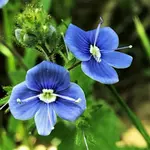
Taller kinds of Speedwell offer excellent cut flowers and look lovely when planted in beds and borders among other plants, while low-growing varieties are best for pots, border edging, and rock gardens. Speedwell’s groundcover variants typically flower in the spring, while its spiky varieties do so in the summer.
The majority of the more than 500 species of Veronica are indigenous to Europe. Most of these are long-lived perennials, but a few are also annuals. Veronica flowers are environmentally friendly because they attract hummingbirds, butterflies, and other pollinating insects.
Vetch
About 140 species of herbaceous plants belonging to the genus Vicia, often known as tare, which is part of the pea family (Fabaceae).
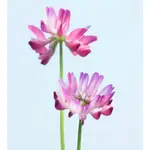
A significant food crop is the fava bean (Vicia faba), and numerous other types of vetch are grown for green manure, fodder, and cover crops. They are extremely valuable as a crop that enriches soil because, like other legumes, they add nitrogen to the soil through the use of nitrogen-fixing bacteria. See crown vetch for information on the low-growing ground cover of Securigera varia.
The plants in this species have stems that can trail or climb, and they can reach heights of 30–120 cm (1-4 feet). Their compound leaves often contain a terminal tendril and multiple pairs of leaflets. This plant produces legumes with 2 to 10 seeds from its magenta, white, bluish-white, or yellow flowers that are borne singly or in clusters.
Violet
Some of the happiest little flowers you may find in every garden are violets. They appear in a variety of hues, but the tones of blue, purple, and white are the most prevalent.

Depending on the species, violets can bloom anywhere from spring to summer in the temperate regions of the Northern Hemisphere. You’re sure to find one (or a few) of the 400 different varieties of violet plants in the genus Viola that will look wonderful in your garden setting.
Since at least 2500 BC, people have grown violets for both decorative and therapeutic purposes, as well as for taste. Today, most nurseries and garden centres provide a large array of violet varieties.
Virgin’s bower
Virgin’s Bower clematis (Clematis virginiana), a natural blooming vine that thrives in a range of lighting situations, might be the solution. The Virgin’s Bower vine is one of the few vines that bloom well in the shade, however, it doesn’t produce the big, showy flowers as other clematis kinds, like Nelly Moser or Jackmanii, do.

Eastern U.S. and Canada are home to the lovely native vine known as the Virgin’s Bower clematis. Perennial and deciduous, this vine thrives in wet lowlands, thickets, and wooded areas, particularly those that are close to streams and ponds. The Virgin’s Bower vine can quickly engulf shrubs and trees because it is a strong climber. It can also grow along the ground, creating a thick canopy of foliage.
Virginia bluebells
Consider adding Virginia bluebells to your garden if you’re seeking a lovely and distinctive accent (Mertensia virginica).
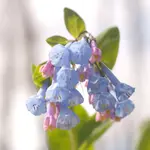
Native to North America, these wildflowers flourish in slightly shaded forests. They are a wonderful addition to any garden, and in the spring and early summer, their colour will bring some life to your landscape.